Want to start juicing but you’re on a tight budget? Here are a few tips to help you save money while juicing (including what to do with the leftover pulp!)
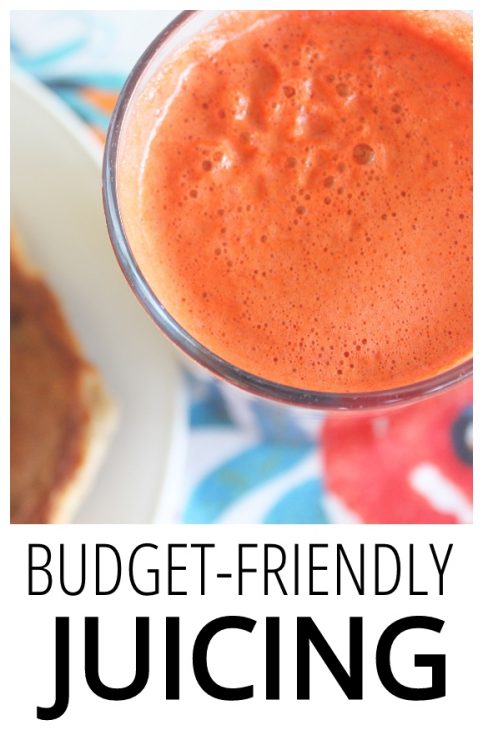
This post may contain affiliate links. View our disclosure policy here.
I didn’t really think juicing was in the cards for me. Making fresh juice from whole fruits and vegetables on a regular basis burns through a ton of produce and money.
However, I’m learning that with some savvy shopping and creative repurposing, we can stick to our budget and still enjoy the benefits of fresh juice from our thrift store juicer.
While there’s some debate on how healthy exclusive juice fasts are, the idea of veggies that taste like fruit appeals to me. See also my confession about green smoothies. I like vegetables as much as the next health nut, but if I can drink a day’s worth in one orange-and-apple-flavored glass, I’m in.
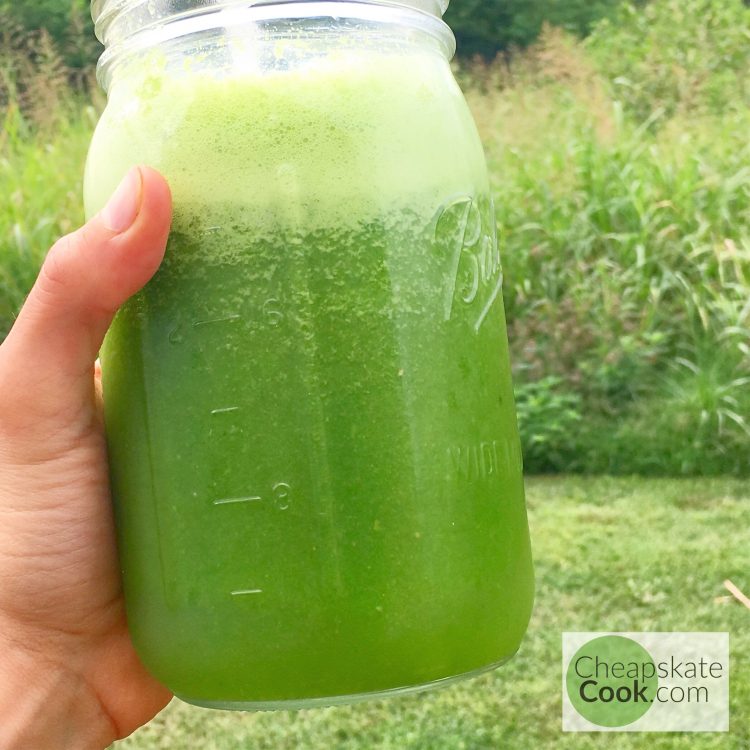
How to Make Budget-Friendly Juice
When we start juicing, it’s easy to go overboard. Those juicing recipes we find online or watched in the documentary use interesting ingredients like fresh fennel and kiwi.
If you’re just trying to increase your fruit and veggie intake, I recommend trying the most budget-friendly fruits and veggies first.
Check the prices in your area and make a list of what will work for your budget. For example, where we live, the most budget-friendly juicing veggies are these:
- Apples
- Carrots
- Greens (chard, kale, spinach)
- Beets
- Celery
- Cucumber
- Oranges
- Fresh ginger
- Lemons
- Pineapple
This list changes slightly depending on the season, but it’s our general guideline.
You can make all kinds of juices with these fruits and vegetables. A quick internet search will give you all kinds of ideas. I tend to lean more heavily on apple-carrot-beet varieties because they are more frugal.
I don’t make juice on a regular basis, but when we run across a killer sale on juicing veggies, I take advantage of it.
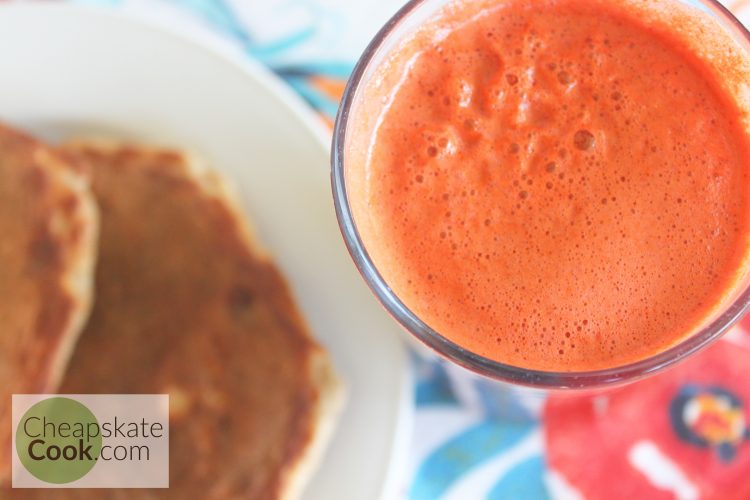
Frugal Juicing: What to do with Leftover Pulp
The main issue is what to do with the leftover pulp. After the juicer strips the produce, I’m left with several cups of fibrous plant guts.
I’ve heard that high quality juicers are so efficient the leftovers are not worth anything beyond the compost bin. However, my Hamilton Beach juicer (affiliate link – because it’s still a great appliance. But definitely check the thrift stores, where I found mine) makes no such claims.
You can do all kinds of things with the leftover juice pulp!
After juicing a couple of glasses, I spend about a minute sifting through the juicing pulp and pulling any big chunks out. No more than a minute because I also have a life.
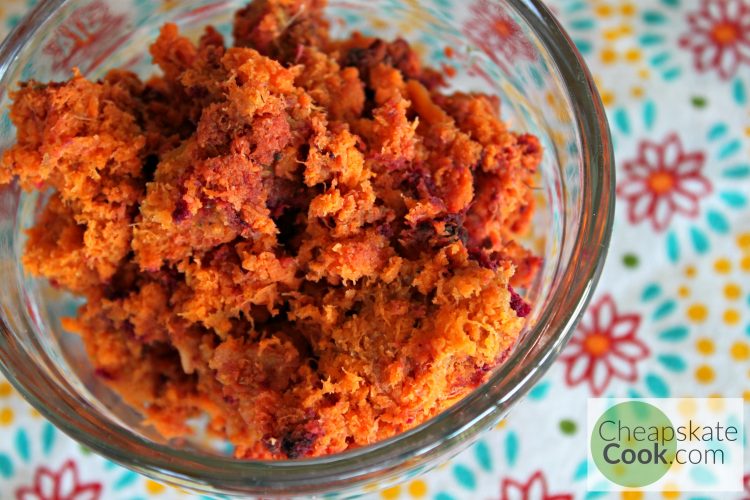
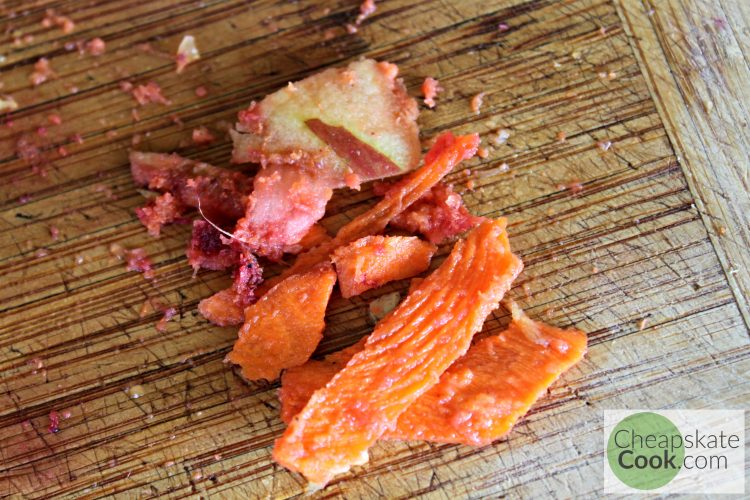
Broth Bag
Bigger chunks of vegetables go in a freezer bag to make vegetable stock later. I would avoid putting a lot of beet or fruit pulp in the stock bag unless you want to change the color and flavor of your stock significantly.
The rest of the leftover pulp (the mushy, sweet stuff) we either use immediately, refrigerate it, or freeze it for later.
Here are 5 ways you can use that leftover pulp:
1. Bread
This is one of the most subtle uses. I simply add 1/4-1/2 cup pulp to the dough while I knead it. The fiber mixes right in, and the flavors blend up beautifully during baking. You can’t even tell the bread has vegetables in it.
Minus the odd chunk of carrot, I missed during my minute of sifting.
I’ve only used this method with whole wheat flour, so I’m not sure how the flavors and fiber blend with white. Let me know if you try it! I use the Easiest Bread Ever recipe.
(Note: this doesn’t work with juice fiber made from beets because the beets turn everything red.)
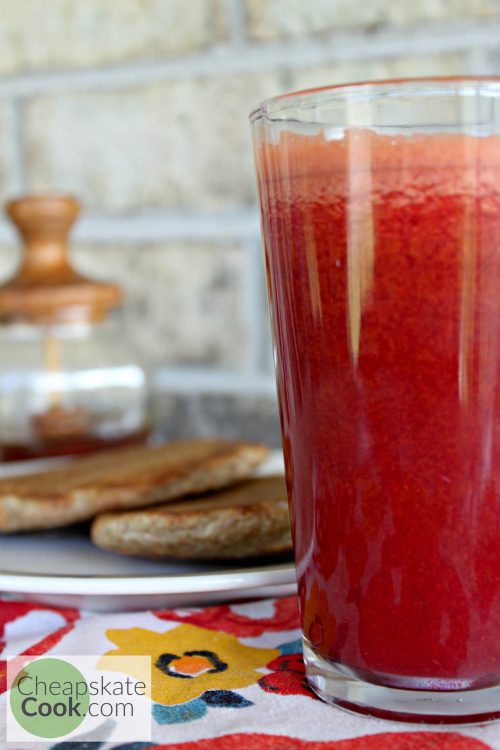
2. Muffins
If I make juice with beets in it, I end up with bright red mush. I use this in chocolate muffins because the color and flavors blend well with the chocolate (props to this recipe for inspiring the idea).
If I have mush made mostly of carrots or a blend of carrots, oranges, and apples (common for fresh juice), I make carrot cake muffins.
I’ll post the recipe for both and link to them here.
3. Spaghetti Sauce
Slip some into slow cooker spaghetti sauce for pasta dishes or lasagna. You don’t want to use pulp with a lot of fruit fiber in it for this one.
4. Crackers
If you have a dehydrator, check out this savory cracker recipe.
5. Compost or Chickens
Compost it or feed it to your backyard chickens. Some people even claim that their dogs enjoy the leftover pulp.
I used to think that in order to have fresh juice, we needed to increase our grocery budget. But with a few good deals and creative repurposing, we drink juice without busting the budget.
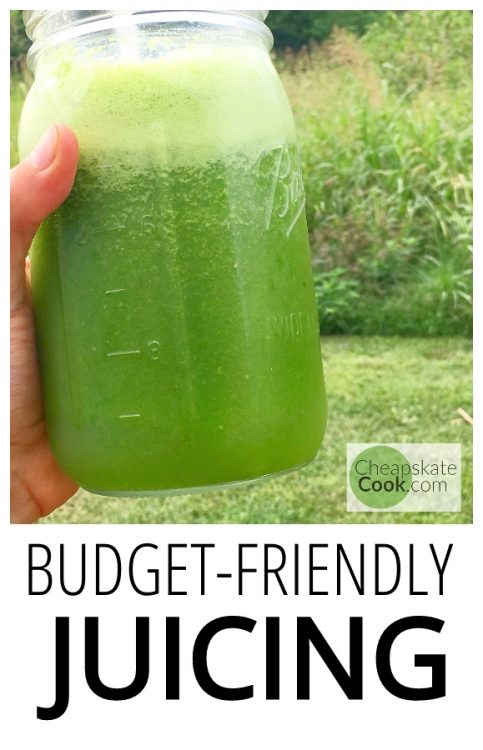
What You Can Do Now:
What are some of your favorite ingredients to make juice out of?
If you found this post helpful, let us know! Leave a comment, share it on Facebook or Pinterest, and follow us on Instagram or YouTube for more!
Slash your grocery budget and feed your family real food! Get simple, frugal, real food menu plans every month for FREE in the Cheapskate Cooks’ 1-Min Email. Get your first one here.

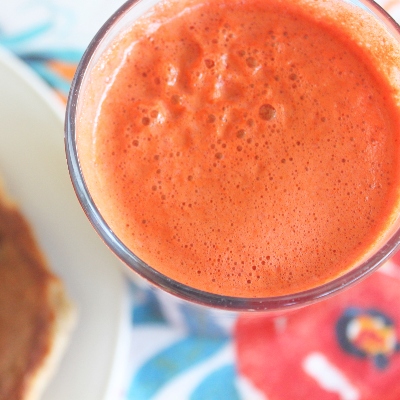
What great ideas. I may have to drag out my juicer… it’s a little dusty.
Mine gets dusty too if I’m honest!